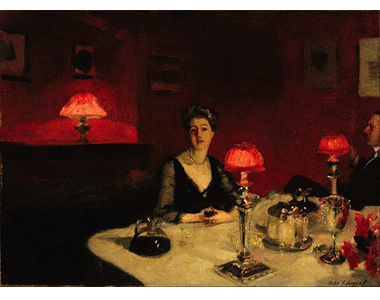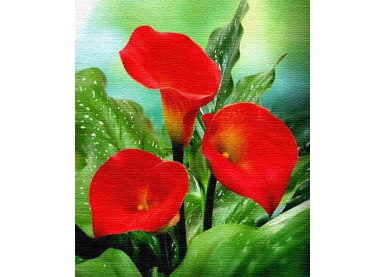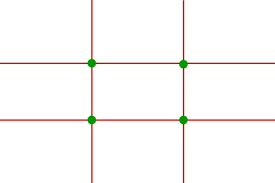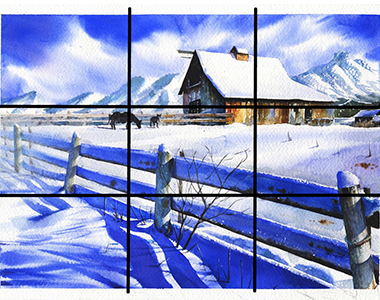A good composition is what will keep the viewer in the photograph/painting to discover the vision of the artist and the message he wants to convey. Composition can create a strong and compelling painting or a week and uninteresting one. It is the first thing that matters in an image. If the composition is bad, there is little that can be done to “save” a badly composited image.
A painting that is well composed is half finished." ― Pierre Bonnard (1867–1947)
The Formal Elements are the parts used to make a piece of artwork. The art elements are line, shape, form, tone, texture, pattern, color and composition. They are often used together, and how they are organized in a piece of art determines what the finished piece will look like.
Line: The visual path that enables the eye to move within the piece.
Shape: Areas defined by edges within the piece, whether geometric or organic.
Color: The different hues.
Texture: Surface qualities which translate into tactile illusions.
Tone: Tone is essentially a color which is not a pure hue, white or black.
Space: The space taken up by (positive) or in between (negative) objects.
Depth: Perceived distance from the observer, segmented into the foreground, background and optionally middle ground.
There are a number of composition techniques used to help achieve unity in a painting. These are discussed below.
Simplification
Simplification is one of the most important skills you can learn as an artist. The master painter's used simplification to reduce the clutter in their artworks and enhance the focal points.
You can simplify your composition in many ways, such as:
Use a limited palette (color range)
Reduce detail of unimportant areas
Use a limited value range (the range between your darkest dark and lightest light)
Use larger paint brushes to simplify the detail in your painting
Remove unnecessary subjects from your painting
Simplification is most effective when combined with targeted complexity. This can be a powerful combination which you can use to really emphasis areas in your painting.

Above is a painting by John Singer Sargent. Let's analyise this painting in terms of simplicity:
The value range very limited, outside of the relatively bright red lights. This really channels the viewer to those bright areas in the painting.
The color range is also very limited, with John Sargent using mostly different tones of red and gray.
The background has very little detail compared to the rest of the painting. This helps focus attention on the foreground, where there is much more activity.
The brush work is very loose and suggesting, which aligned with the generally dark lighting in the scene.
Rule of Odds
The rule of odds states that a composition is much more interesting to look at when it contains an odd number of elements rather than an even amount. An even number will create symmetries that can quickly become boring and uninteresting to look at.
When we see an even number of objects, our mind tries to group them into pairs. This often leaves the center of a scene empty. The human eye is naturally attracted to the center, and an even number of elements create an open space in that center. Having an odd number of things in a composition means our eye and brain can’t pair them up or group them easily. There’s somehow always one thing left over, which keeps our eyes moving across the composition.
The rule of odds also applies when an even number of supporting objects surrounds a single subject. In this way, there will always be an element in the center “framed” by an even number of surrounding objects. This framing is more comforting to the eye and thus creates a feeling of ease and pleasure.

Focal point
The focal point of a painting is the area in the composition to which the viewer’s eye is naturally drawn. It is essential to classic art, although abstract artists may deliberately create compositions without focal points. Focal points may be of any shape, size or color. Composition theory dictates those focal points ought not to be in the center of paintings, but rather one-third of the way across or up the composition, in one of the rectangle’s four quadrants.
How Many Focal Points Should I Add to My Art?
You only need one primary focal point. For example, when painting marine scenes, if you are interested primarily in the ocean, tone the sky down and simplify it so it does not detract from the ocean. Conversely, if you are primarily interested in the sky, tone down the sea.
For beginners, practice getting one good focal point in your art, which will instantly help you improve your compositions.
As you increase your skills you can add more focal points, but always make sure you have one focal point that stands out above the others. You do not want to dilute the main focal point, but secondary focal points help to keep the viewer’s eye moving around the painting and keeps them interested.
5 Ways to Create a Focal Point in Art
1: Use lines to lead the viewer to your focal point:
2: Make the focal point the darkest or lightest part of the painting
3: Use highly saturated color in contrast to a neutral background
4: Keep the warmest and coolest colors together
5: Place the focal point a third way across or down the painting
The rule of thirds is about creating a sense of balance in the composition and it has been used by the greatest master painters with remarkable results.
What Is the Rule of Thirds?
It's a guide to help you compose a picture that looks balanced and interesting.

Here is how you do it:
Start by drawing equally spaced lines, two horizontally and two vertically.
The lines split the picture surface into thirds.
The intersections of the lines mark the sweet spots, where you can place the points of interest of the composition
When planning your composition, position the elements of your painting in reference to the lines of the grid and the focus points, to guide the viewers’ eyes to what you want them to notice.
With focal points that are not in the center of the picture and the space divided into thirds, instead than in half, you can avoid a picture that looks too static. Also, the rule of thirds allows you to create movement and a sense of complexity without making it too busy.
Drawing a Composition Following the Rule :

When you start drawing your composition, start by drawing the lines that divide the picture’s surface into thirds, then plan the composition, either referring to a real subject or from your imagination.
For example, drawing a landscape, you can place a house on a soft spot, and use the lines of thirds to draw the horizon and the other lines on the landscape, like trees, roads, clouds, etc.
Use lines and color to create a focal point, but also generate interest in various parts of the painting
Register now to get updates on promotions and coupons.